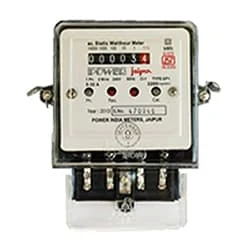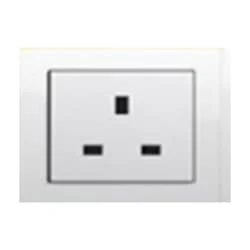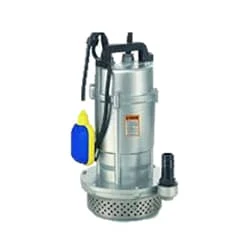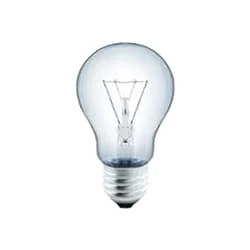Full House Wiring Diagram Using Single Phase Line
Full House Wiring Diagram Using Single Phase Line:
This diagram shows how to connect the Full House Wiring Diagram Using a Single Phase Line. In this diagram, we try to describe how to connect a full house wiring very easily. We use here some switches, a single phase energy meter, DP MCB, RCCB, and single pole MCB circuit breakers and also use loads like (lights, water pump, and water heater). Follow our diagram and make very easily this circuit.
Full House wiring in Single Phase wiring:
Components Need for this Project:
You can get the components from any of the sites below:
- Single Phse Energy Meter [See Buy Click Amazon]
- RCCB [See Buy Click Amazon]
- DP MCB [See Buy Click Amazon]
- SP MCB [See Buy Click Amazon]
- 2-Way Switch [See Buy Click Amazon]
- 3-Pin Plug [See Buy Click Amazon]
- 3-Pin Socket [See Buy Click Amazon]
- Water Pump [See Buy Click Amazon]
- Water Heater [See Buy Click Amazon]
- Light [See Buy Click Amazon]
*Please note: These are affiliate links. I may make a commission if you buy the components through these links. I would appreciate your support in this way!
$ads={1}
Read Also:
Components used to make the Full House Wiring Diagram:
01. Single Phase Energy Meter
 |
Fig 2: Single Phase Energy Meter
|
The measuring device with the help of which the electric power or energy of a circuit is measured is called Energy Meter (Energy Meter). Also called a watt-hour or kilowatt-hour meter. For home appliances, we used a single-phase energy meter. The single-phase energy meter is directly connected between the line and the load. Both coils produce their magnetic fields, when the meter is connected to the supply line, and the load. Energy meters are used in homes and in industrial applications where we want to found that how much energy is being consumed by home appliances and electrical equipment.
02. RCCB
 |
| Fig 3: RCCB |
The RCCB (Residual Current Circuit Breaker) or RCCB is an electrical protective device.Residual Current Circuit Breaker is specially designed to protect the electrical circuit against earth fault and human from electrical shock.In this, under normal condition the load is always connected in between the phase terminal to neutral terminal, hence the flow of phase current is equal to neutral current.Earth fault or fault in a power system can cause excess heating, more power consumption, burning or fire, etc. So, protection against earth leakage is very important.
03. DP MCB
 |
| Fig 4: DP MCB |
04. SP MCB
 |
| Fig 5: SP MCB |
MCB SP means single pole it protects only one phase switching. MCB (Miniature Circuit Breaker) Curswitch is the most basic general-purpose switch that you use to control a light or another device from one location. These Switches Have Two Brass-Colored Screw Terminals Connected to the hot Power Source Wires. (MCB) For any Distribution Board, the Protection System Must be Used in The Incomer. Phase and Neutral Single Phase Supply to break. 120-volt circuits, 15-20 amp single pole breaker is typically used.
05. 2-Way Switch
 |
| Fig 6: 2-Way Switch |
The two-way switch is a type of multiway switch. Multiway switches have more points and can be controlled in multiple ways simultaneously. The middle connection normally goes to the load and the two side connections act as switches. Again, the opposite is also true if it is used in the lamp connection.It is a type of switch that has three wire connections. And it really has no off or on. Both sides can be turned on or off depending on how you connect one to the other. The two-way switch is a type of multiway switch. Multiway switches have more points and can be controlled in multiple ways simultaneously. Two Way Switch has three wire connection system.
06. 3-Pin Plug
 |
| Fig 7: 3-Pin Plug |
Many of us mistake a device that receives power through a 3-pin plug as a 3-phase load. Actually, they are single-phase loads and a 3-pin plug is used in these devices to avoid electrical accidents. This type of plug has three pins called 'Live', 'Neutral', and 'Earthing' which are marked by letters 'L', 'N', and 'E' respectively. The three wires to which these three pins are connected are also colored differently. The earth pin is connected to yellow or green, live pin to red or brown and neutral pin to black or blue wire. Among these pins, the earth pin is the longest and thickest.
07. 3-Pin Socket
 |
| Fig 8: 3-Pin Socket |
A socket is a type of equipment used in electrical wiring lines that always has an electrical connection. According to the need, it can be supplied to the electrical equipment. In case of electric iron, electric hand drill machine and electric hand grinder etc. two-pin socket with earth terminal is used. Also, three-pin sockets are used for electrical appliances that have a metal body and are likely to be electrified. Eg – Refrigerator, room heater, table heater, hot-plate, electric oven etc.
08. Water Pump
 |
| Fig 9: Water Pump |
All kinds of Submersible Pump Suppliers, and Full Global Submersible Pump Technology Support. Well-known submersible Pump manufacturer, global submersible Pump technology support. Sewage Pump. Screw Pump. Water Pump. Fire Pump. Styles: water pump, centrifugal pump, fire pump, sewage pump.All kinds of Submersible pump suppliers, and full global submersible Pump technology support. global submersible Pump technology support, Well-known submersible Pump manufacturer.
09. Water Heater
 |
| Fig 10: Water Heater |
A Water Heating appliance that Utilizes Electric Current to heat the Water and a large tank to store the hot water for a long Duration is known as a geyser water heater. An Electric Geyser Water Heater Consists of An Electric Heating Element Made of Nichrome, Which Heats up The Water Stored in The Storage Tank. A Geyser Is a Common Home Electronic Appliance That You Can Have In Your Bathroom. If The Temperature Gets Low You Can Use a Geyser to Get Hot Water Constantly.
10. Light
 |
| Fig 11: Light |
CFLs work in a completely different way from ordinary lamps, they work by using a different process called fluorescence rather than generating light from heat. A typical light bulb wastes 90% of energy and converts only 10% of energy into light, this is where CFL has the biggest advantage. CFL- Curved or conical glass tube filled with argon and a small amount of mercury vapor. The inner wall of the glass is coated with fluorescent material. CFL- It is manufactured using the principle of creating fluorescent light. CFL- Originally white in color but now the construction and use of CFLs producing colored light has become popular.
Thank You for visiting the website. Keep visiting for more Updates.
$ads={2}
Frequently Asked Questions
Which system is used in house wiring?
The ring system is the widely used system in household wiring. In a ring system, the phase line, neutral line, and earth line from the main switches are taken to all the rooms and then returned to the main switch.
What wire is used for house wiring?
NM Cable. The most common type of home electrical wiring is the NM cable also known as the Romex of the cable, after the most popular electrical wiring brand name. The NM cables contain 3 or more individual conductors, wrapped together in a sheathing, which is a flexible plastic jacket.
How much wire is needed to wire a house?
However, a general rule of thumb is to estimate the approximately 1.5 to 2 feet of wire per square foot of living space. For example, a 1,000-square-foot home may require between 1,500 to 2,000 feet of wiring.
How thick is house wiring?
Normally 6 mm² is used for the uprights, 2.5 mm² for the circuits that power the sockets or fixed appliances such as the air conditioner, and 1.5 mm² for the light circuits. Continuing with general information, the larger the section of an electric cable, the greater the current flow that will pass.
How do you calculate wire length for house wiring?
As a general rule of thumb, you would want 1 foot of wire per square footage that is covered by your house. This does not include the wiring used in any detached structures such as a garage and shed. If those are present, additional wiring would be needed to accommodate them.
You may like these posts


















Post a Comment
Do leave your comments